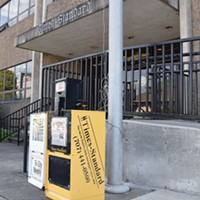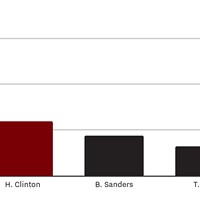Welcome to our second annual Media Literacy Issue. A lot has changed since last year's inaugural offering (June 7, 2018), penned as the fake news chorus gripped the nation. The inspiration behind that issue was transparency, wanting to bring you, our valued readers, into the proverbial newsroom to help you understand how this newspaper works and why we make the decisions we do. It touched on everything from how we put together a news story and why there are so many advertisements in our pages to why we cover cannabis on a weekly basis and how we go about writing about restaurants. It was filled with good (award-winning) information designed to help readers better engage with us and understand what we're trying to accomplish. But simply rehashing that information seemed like, well, old news.
And times have changed. In discussing how to go about putting together this issue in 2019, we quickly came to realize that the biggest local media story currently playing out is over at the Times-Standard, which recently lost three newsroom staffers in a six-week span, leaving it with just two news reporters to cover the entirety of Humboldt County.
We may be biased — with three of our editorial staffers being Times-Standard refugees — but we feel the paper is vitally important to Humboldt County. You see, daily news reporting lays a kind of foundation for a local news ecosystem. When fully operational, it reports on the city council meetings, local court cases and community efforts that form the basis of community knowledge. Those local news updates on the radio you hear? They're traditionally plucked directly from the pages of the local daily. That deep-dive investigative report you read in an alternative weekly like the Journal? Often, they began with something a reporter read in a daily paper that raised question or piqued a curiosity. If the daily paper isn't healthy, the entire news ecosystem suffers. Weeklies are forced to fill in the gaps of daily reporting, leaving less time for those investigations. Local radio stations are more likely to pluck from national headlines, leaving more residents out of the loop on what's happening around them. And more things get missed, meaning you might feel blindsided when your water rates go up or you see a tax measure on the local ballot.
As you'll read, what feels like the death rattle of our iconic local daily is not an anomaly, but part of a trend playing out across the nation as newspapers are bled out by corporate owners or smothered by challenging economic realities. In some cases, this has left entire counties without a newspaper. (Find more about the national trend on page 12 and the particular plight of the Times-Standard on pages 6 and 9.)
Amid this disheartening news about our industry, we were curious about the state and future of youth journalism. Thankfully, the kids are alright and we found reason for optimism, which you can read more about on page 5.
If the realities of the newspaper industry are currently grim, they no doubt pale in comparison to those facing our climate, so we hit up a local environmentalist to weigh in on how reporters can better respond to the global climate crisis to make sure readers are getting the information they need to make informed choices (Page 18).
And because Humboldt County is one of the nation's richest in Native cultures — which we are keenly aware are far too infrequently considered or reflected in the media — we asked the chair of Humboldt State University's Native American Studies Department to weigh in on how Native peoples are — and should be — represented (page 13).
There's also a presidential election that's about to ratchet into full gear, so HSU Journalism Chair Vicky Sama offers some food for thought on how media coverage shapes the race (page 16). Oh, and because many increasingly feel national news has become an unrelenting hellscape, we've got HSU's Deidre Pike weighing in on the importance of parody (page 17).
Our A+E section features insights on how the Journal's music (page 25), art (page 20) and film (page 43) writers view and go about their tasks. We also take a critical look at food writing (page 19).
We hope this issue, picking up from where the last left off, offers you some insight into how the media world works and some of the forces that guide it. And while we have your attention, we'll end with a plea: Support local journalism. The vast majority of journalists in Humboldt County are here because they love the work and love the community. But they also have mortgages, student loan debt and families to support. If you value their work, support it and them by making a donation, buying a subscription or frequenting one of their advertisers. We're lucky to live in a community rife with local news sources and we should all fight to keep it that way.







Comments